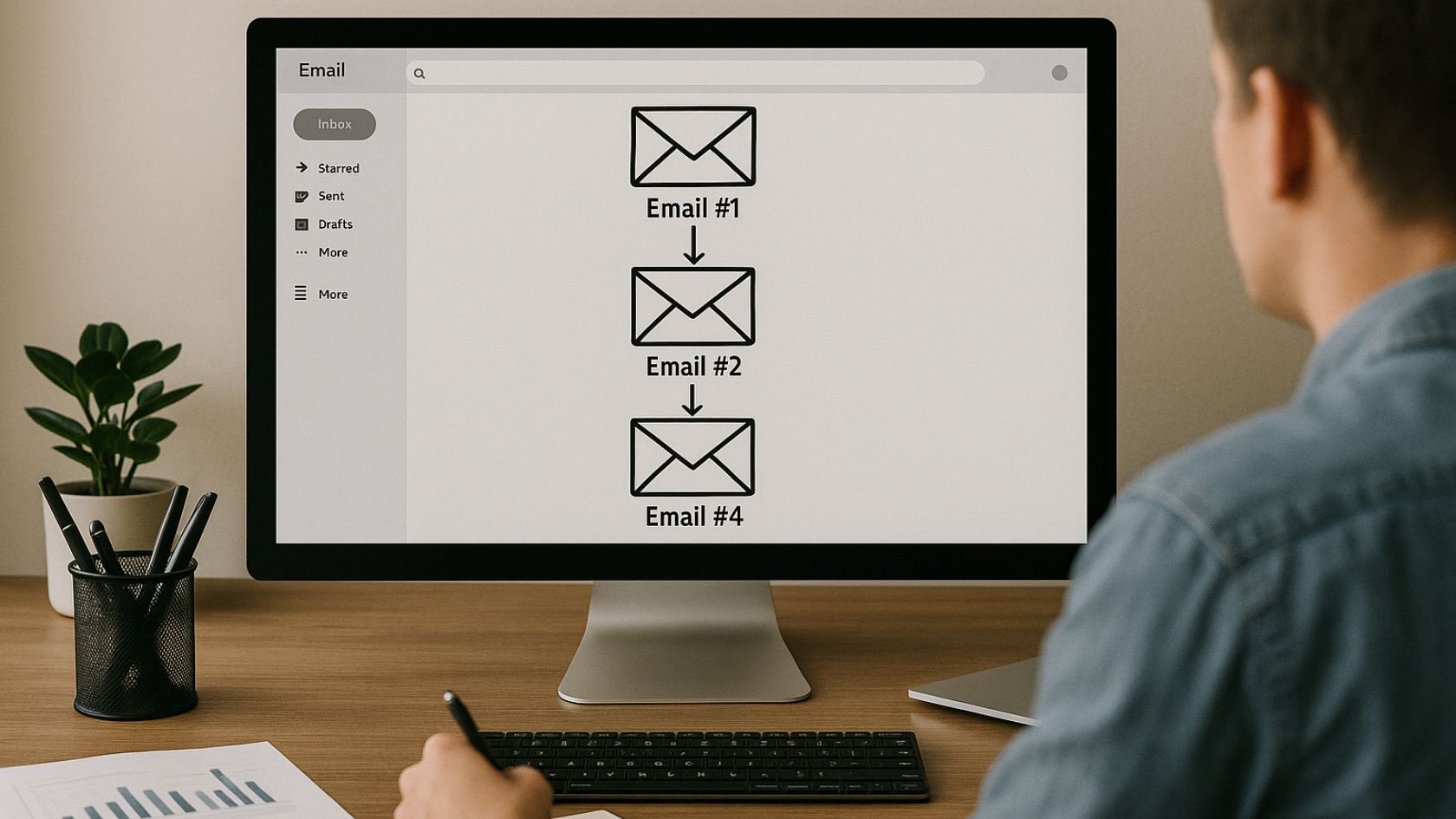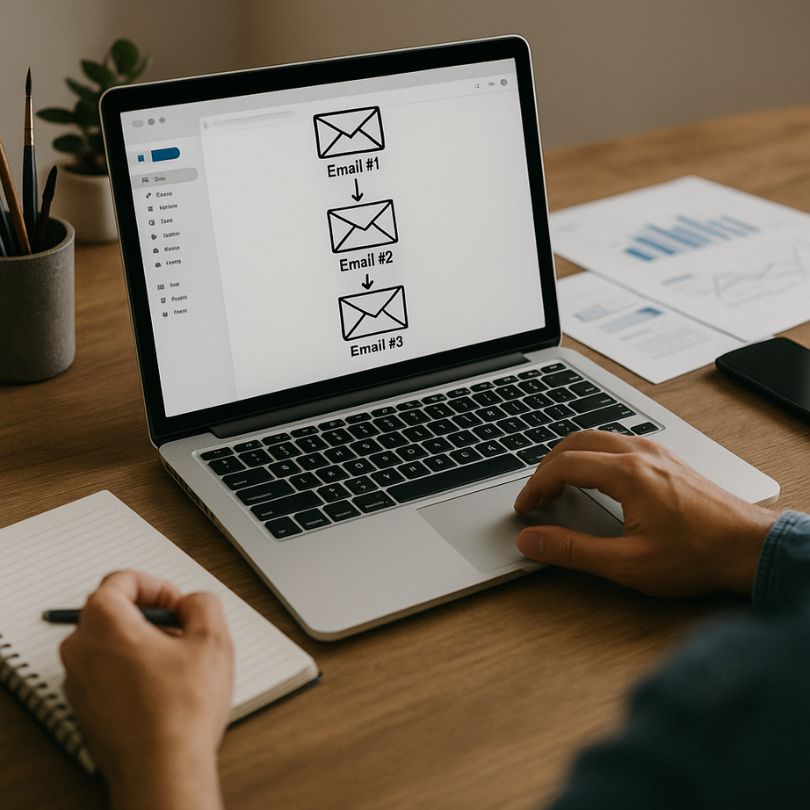
Building Email Sequences: The Complete Step-by-Step Guide to Higher Conversions

Building email sequences is one of the most reliable ways to turn strangers into subscribers and subscribers into customers, without having to rely on luck, viral moments, or constant ad spend. When you design a sequence with intention—aligned to your audience, your offer, and the buyer journey—you create a system that nurtures trust, educates readers, and makes the buying decision feel obvious. In this guide, we’ll walk through the strategy, structure, copy tactics, timing, and tools you need to launch or improve effective sequences.
Before we dive into frameworks, it helps to align on what an email sequence is and why it works so well. An email sequence is a planned set of messages sent automatically based on time or behavior. The biggest advantage is consistency: once built, your best thinking reaches every new lead, every time. If you’re new to the concept or want a second perspective, this concise Shopify guide to email sequences is a great primer on how sequences fit into broader lifecycle marketing and how they can support long-term retention.
What Is an Email Sequence, Exactly?
An email sequence is a narrative your brand tells over days or weeks with a defined goal. Common sequence types include: welcome/onboarding (for new subscribers or users), problem–solution education (for lead nurturing), product launch (to generate anticipation and urgency), post-purchase (to drive adoption and expansion), re-engagement (to revive inactive contacts), and win-back (for lapsed customers). Each type should map to a clear outcome and to a specific stage of awareness—from “problem unaware” to “solution aware” to “most aware.”
Sequencing shines when paired with channel synergy and clear monetization paths. Consider how community or social traffic warms up prospects who later join your list, and how your emails point them toward content or offers that move them forward. For instance, creators running communities can pair sequences with targeted educational content or affiliate offers; this deep dive on affiliate marketing on Discord shows how community intent can translate into sequenced education that leads to revenue—without over-relying on one-off broadcasts.
Prerequisites: Audience, Offer, and Data
Great sequences start long before you write a single subject line. First, clarify your ideal customer profile (ICP) and the key jobs-to-be-done they care about. Define a crisp value proposition and identify the strongest proof you have (case studies, benchmarks, demos, testimonials). Then, map the stages of your funnel and the handoffs between marketing, sales, and success. This ensures your sequence connects dots instead of sending disjointed messages.
Next, get your data hygiene right. Tag sources (ad campaign, webinar, checklist), capture key attributes (industry, role, use case), and implement event tracking (visited pricing, started checkout, used feature X). Clean inputs enable personalization logic—branching content, targeted offers, accurate timing—that dramatically improves engagement without feeling creepy.
The Anatomy of a High-Converting Sequence
Think of a sequence as a mini product: it has an audience, a promise, a structure, and a feedback loop. Here’s a practical blueprint:
- Positioning Statement: One sentence that states the pain, stakes, and desired future. This anchors your copy and CTA.
- Content Ladder: Progress from quick wins to deeper transformation. Early emails deliver lightweight value; later ones build conviction.
- Proof Pack: Interleave testimonials, numbers, screenshots, and demos to address skepticism as it arises.
- Objection Map: List top doubts (price, complexity, timing) and assign each to a specific email.
- Primary CTA: One action per email (reply, book, start trial, view plan). Keep it consistent within each message.
Suggested 7-Email Structure
- Email 1 – Promise + Quick Win: State the outcome, give a tiny result in 5 minutes, and set expectations for what’s next.
- Email 2 – Problem Story: Tell a short narrative about a customer stuck before finding your solution; end with a soft CTA.
- Email 3 – Teaching Moment: A concise how-to with screenshots or a checklist; include a single, clear CTA.
- Email 4 – Social Proof: Case study snippet with specific metrics; invite readers to see a full example or book a call.
- Email 5 – Objection Crusher: Pick the biggest blocker and dismantle it with evidence and a guarantee or risk reversal.
- Email 6 – Product-in-Action: A short demo or GIF breakdown that shows the “aha!” moment; CTA to try the feature now.
- Email 7 – Urgency/Decision: Summarize value, restate promise, and present a time-bound incentive if appropriate.
Cadence, Timing, and Duration
Cadence is a function of intent and complexity. For high-intent leads (e.g., pricing page visitors), send daily for the first 3–4 days, then taper. For lower-intent or educational sequences, aim for every 2–3 days to maintain attention without fatigue. Keep most sequences to 10–14 days; beyond that, shift contacts to your evergreen newsletter. Use send windows that match your audience’s work patterns; avoid batching at midnight and test local-time sends where possible.
Personalization That Scales
Personalization isn’t just “Hi {{first_name}}.” Use contextual personalization: reference the source magnet they downloaded, the job title they chose, or the page they last visited. Consider simple branching: if a lead watched a demo, skip the intro and move to advanced benefits; if not, send a quick recap. Use conditional blocks to swap examples by industry. Keep it human—read every dynamic sentence aloud to ensure it sounds natural.
Writing Tips That Boost Replies and Clicks
- Subject lines: Write 5–7 variants; aim for clarity over cleverness. Test curiosity (“What your trial isn’t showing you”) vs. specificity (“3 settings to fix before day 7”).
- Open strong: Use a hook that names the pain or paints the outcome. Avoid throat-clearing intros.
- One job per email: If you need two CTAs, split into two emails.
- Skimmable layout: Short paragraphs, bullets, bolded keywords. Most readers skim first, then commit.
- Make CTAs unmistakable: Button-style links and a mirrored text link for accessibility.
- Write for voice, not grammar: Natural beats formal. Contractions and simple verbs win.
Testing, Measuring, and Iterating
Start simple: launch a minimum viable sequence, then iterate ruthlessly. Test big levers first (offer, CTA, order of emails) before micro-optimizations (emoji in subject lines). Build a scorecard and review it weekly for the first month, then monthly. Compare cohorts by source and persona, not just aggregate averages, so you can spot segments that need different messaging.
Open Rate
Proxy for subject line and from-name clarity. Watch by segment and mailbox provider.
Click Rate
Indicates message–offer fit. Track unique clicks on the primary CTA.
Reply Rate
For sales-led flows, treat replies as a primary conversion, not just clicks.
Conversion Rate
Trial start, booked call, purchase—tie to revenue, not vanity metrics.
Time-to-Conversion
Measure how quickly leads act; use it to tune cadence and timing.
Unsubscribe/Spam
Signals misaligned expectations or too-frequent sends—fix fast.
Compliance and Deliverability Foundations
Set clear consent expectations at opt-in. Honor unsubscribes immediately, and make it simple to manage preferences. Authenticate your domain (SPF, DKIM, DMARC), use a dedicated sending domain for marketing if possible, and warm it up gradually. Keep lists clean with sunset policies for inactive contacts. High relevance is the ultimate deliverability tactic; mailbox providers reward engagement.
Tools and Automation, Sensibly Used
Most modern platforms can handle branching logic, event triggers, and A/B tests. Start with a lightweight stack and add complexity only when you feel the constraint. Create a living document that maps entry criteria, flow paths, and exit conditions so teammates can maintain the sequence without guesswork. Implement a changelog to track experiments and outcomes over time.
Common Pitfalls to Avoid
- Too many goals in one flow: Pick one North Star conversion and align every email to it.
- Front-loading proof: Earn attention first with quick wins; add heavier proofs once trust forms.
- Generic personalization: If data doesn’t improve clarity, don’t use it.
- Unclear next step: Every email should answer, “What should I do now?”
- Never pruning: Sunset stale contacts and archive underperforming emails.
Conclusion
When you approach building email sequences as a product—purposeful, measured, and audience-obsessed—you create a durable engine for growth. Start with one tightly scoped flow, ship it, and iterate. As your proof grows, your messaging sharpens, and your timing improves, you’ll see compounding gains in conversion and retention. For competitive research and creative inspiration, a native ad intelligence tool can help you spot angles that resonate in your niche—then your sequence can translate those angles into consistent, ethical conversion.